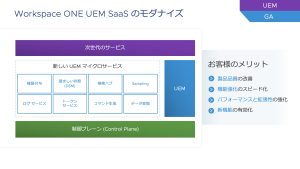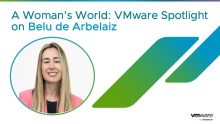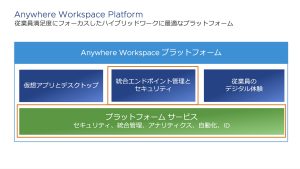The companies we at VMware Tanzu work with are constantly looking for better, faster ways of developing and releasing quality software. But digital transformation means fundamentally changing the way you do business, a process that can be derailed by any number of obstacles. In his recent video series, my colleague Michael Coté identifies 14 reasons why it’s hard to change development practices in large organizations. In this companion series of blog articles, we’re exploring each of those topics in more depth, providing advice on how you can address them in your business.
Today, let’s look at reason no. 8: The Skills Problem.
Lack of skills
It doesn’t seem to matter which vendor report you read. They all state a lack of in-house expertise or limited workforce as being one of the biggest challenges when adopting cloud native technologies and practices. Those same reports indicate that organizations investing in modern platforms and cloud native technologies are experiencing significant gains in speed and efficiency. However, a lack of in-house expertise poses a challenge in adopting these technologies.
In this article, we explore the causes of this skills problem and offer three practical steps you can take to bridge the gap.
Cognitive overload
Throughout the last decade, organizations worldwide have embraced a combination of cloud providers, microservice architectures, and containerized services to meet growing expectations for agility, availability, and performance. Managing and troubleshooting these intricate systems can be mentally challenging, especially when issues arise and need to be diagnosed and resolved quickly. Consequently, reports of “cognitive overload” have surged among developers and operators as they struggle to keep up with the latest technology and best practices. The rapid pace of technological advancements has led to cognitive overload among developers and operators. Keeping up with the latest developments, frameworks, and tools has become mentally exhausting. I find it no coincidence that during this same time we’ve seen a historic rise in attrition within IT teams.
The most recent State of Kubernetes survey conducted by VMware reported that 57 percent of organizations cited “inadequate internal experience and expertise” as their top challenge (up from 13 percent in 2022). Of the 750 qualified software development and IT professionals surveyed, more than 60 percent of them said that Kubernetes adoption had led to more efficient IT operators and more productive developers. Most notably, a quarter of respondents saw a growth in market share and increased profit margins as a “direct impact as a result of using Kubernetes.”
So, how can organizations make sure employee skillsets evolve in step with technological advancements so they can realize their full potential?
Step 1: Build a center of excellence
To address the skills gap, organizations can establish a cloud center of excellence (CCoE). A CCoE acts as a consultative function, supporting central IT, business unit IT, and cloud service consumers. By leveraging the CCoE’s expertise, organizations can research and implement new tools and ways of working that align with their specific needs. This initiative promotes knowledge sharing, builds awareness, and provides in-house training to bridge the skill gap and drive digital transformation.
Because they do not have any day-to-day operational activities, the CCoE has the capacity to research the new tools and ways of working that best suit your organization. In addition to supporting queries from the business, the CCoE can run internal events to build awareness and operate in-house training workshops to begin filling the skill gap or assisting the organization in a digital transformation.
Some sneer at the concept of a CCoE, and that can be justified if the CCoE’s practices are not useful. To monitor for this, get a sense of how widely adopted the practices recommended by the CCoE are. If those practices are not being followed, find out if developers and others even know the recommendations. You can do this by asking them! And if the developers do know the practices but are not following them, the practices likely need to evolve. This is very similar to the process you’d expect developers to use when improving features in their software: Collect feedback about the usefulness of what you deliver and, crucially, actually change as needed based on that feedback. If the structure and funding of your CCoE does not allow for this, then you have a fun, new executive quest to go on!
Step 2: Adopt pair programming
There are lots of ways to learn, but the most effective way of learning is by doing.
One of the most impactful ways I’ve seen in practice to dramatically expand the skillset of a team is through pairing with an organization like Tanzu Labs (formerly Pivotal Labs), which has been doing some amazing work with the United States Army and other organizations. Since 2011, soldiers within the Army Software Factory have been pairing one-on-one with Tanzu Labs experts to learn how to build, deliver, and operate software like best-of-breed Silicon Valley companies.
The immense benefit to this approach is that you’re not affecting overall productivity by sending developers off to training. Instead, they learn while doing actual work inside your specific environment. Learning while doing is also valuable because it’s based on real-world experience and problems, not demos and examples.
During the process, you’ll have the opportunity to identify people who have a natural aptitude to act as advocates and trainers, people who are willing and able to help teach other teams. By then placing these individuals with other teams and repeating the process, you can exponentially grow the approach throughout the organization. With a sufficient amount of initial momentum, it’s possible to scale this approach to even the largest of enterprises and ensure that all new employees have good role models.
Step 3: Encode good practice
Pairing is a fantastic way to quickly gain the skills necessary to bring momentum to a digital transformation, but it does require people to work together, which adds some overhead and can be challenging in remote environments. Another way to encourage best practices is to bake them directly into your software development lifecycle.
To promote best practices and streamline software development, leading organizations are implementing golden paths. These opinionated, well-defined approaches provide developers with a clear and supported method for turning ideas into code and deploying them to production safely. By having a standardized approach and toolsets, developers don’t need to worry about the “plumbing” of infrastructure or the decision paralysis of reviewing hundreds of development frameworks. Instead, they can focus their time on creating software. There are fewer decisions to make and less friction, with increasing standardization and more opportunities for automation and efficiency. Golden paths enable organizations to build better software and deliver it to production faster, with higher quality and more control.
VMware has more than a decade of experience building platforms that developers love. VMware Tanzu Application Platform includes three developer experience components to help you bake in best practices to your delivery pipeline:
-
The Tanzu API Portal enables developers to discover and try out existing capabilities created by other teams in the organization. Powered by OpenAPI and presented in an attractive GUI, developers can see documentation, API parameters, and more—all in one place. In addition to avoiding duplication of effort across teams, this can drastically reduce the skills gap by giving developers a central place to find the information they need to build new features that take advantage of existing capabilities.
-
Tanzu Application Accelerators bootstrap the development with ready-made, enterprise-conformant template applications. Accelerators contain complete and runnable application code that developers can tailor to their needs through a set of predefined input values. This drastically reduces the expertise necessary to create common software architectures, while dramatically improving conformity to corporate policies and standards.
-
Tanzu Developer Portal is an internal developer portal, built on Backstage, that simplifies how enterprise software organizations coordinate, collaborate, and execute across multiple teams and business units. Tanzu Developer Portal provides a common destination for developers to discover assets such as project templates, common dataset APIs, or standard supply chains, while also being able to monitor in-progress tasks like continuous integration and deployment (CI/CD), automated testing, and production operations.
-
The Tanzu Learning Center provides a platform for creating self-hosted interactive workshops. Educators can combine slide content, an integrated development environment (IDE), a web console for accessing the Kubernetes cluster, and other custom web applications. Rather than giving new employees a library of dusty policy documents, they can be quickly brought up to speed on company-specific ways of working and best practices through interactive, online learning guides. This tool is used internally by the VMware Tanzu team, and you can see it in action by following our free hands-on guide for building golden paths in Tanzu Application Platform.
Closing the skills gap
Businesses recognize they need to continuously keep their people’s skills up to date. There are lots of ways to learn beyond the traditional training courses and tech conferences. By setting up a cloud center of excellence (CCoE), the organization has a pool of resources that are not constrained by day-to-day operational duties and can help other teams understand what technologies or ways of working might benefit them. When an organization has a need to rapidly onboard new skills and capabilities, the most time-proven approach is to pair with an organization such as Tanzu Labs, where employees can work and learn alongside leading experts. Finally, to ensure that technology choices, best practices, and corporate policies are implemented and followed consistently across the organization, you can use a platform engineering tool such as Tanzu Application Platform to bake best practices directly into your software delivery pipeline.
Read about other common digital transformation bottlenecks we’ve encountered and how to overcome them:







